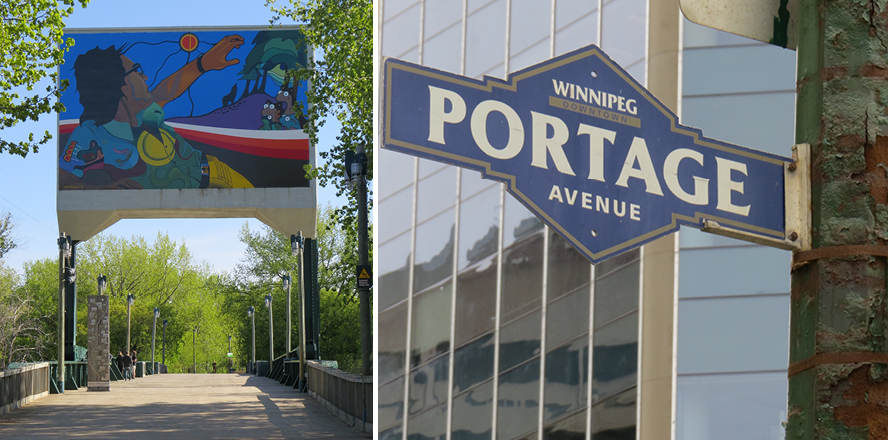by Tina Kelly –
London, Paris, Winnipeg. I don’t know how I did it – I convinced a friend to use hard-earned vacation and holiday in Manitoba. Signs of Canada’s 150 were everywhere and a patriotic buzz was in the air. I was struck by the notion that I had focused more on accruing passport stamps than exploring the country gilded on my passport’s cover. Enter Winnipeg.
My friend was lured by the guarantee of a classy hotel and the promise of history, art and museums. Timing was critical. Winnipeg’s seasons have reputations: summer, large flying biting insects; and winter, an extreme cold we could never imagine. We settled on May and as we stood at the infamous Portage and Main – reputed to be the coldest, windiest intersection in Canada – there was nary a breeze, chill, or bug in the air.
Splurging for the historic Fort Garry Hotel, we were perfectly situated to explore the sights by foot. The original opulence of the 100+ year old chateau-style Canadian Grand Railway Hotel was evident.
Just steps from our hotel was The Forks. Aside from a few remaining train cars, it was difficult to imagine we stood upon a former abandoned rail yard; the area revitalized into a multi-use space where we took in dining, greenspace, public art, the Canadian Museum for Human Rights and a National Historic Site. The historical significance lies in the location: The Forks sits at the confluence of the Red and Assiniboine Rivers. Ambling along the Riverwalk, a trail skirting along the rivers, we took in the views and took time to learn from interpretive panels depicting settler history and the 6,000-year-old connection Indigenous Peoples have to the area.
Standing out against the drab, boxy architecture of the city was the Canadian Museum for Human Rights. Architect Antoine Predock took inspiration from the Canadian landscape – grasslands, Northern lights, mountains, snow – and has described the building as “being carved into Earth and dissolving into the sky.” Encouraged by a volunteer to explore from the top down, we headed skyward up to the Tower of Hope and started with 360-degree views of the city.
Unlike most museums, there are few artifacts; instead exhibits feature strong visual designs and extensive use of multimedia technology to explore human rights in Canada and around the world. In all, 4,366 square metres of exhibit space is spread across seven floors. Etched in my memory are select exhibits – Canadian Journeys, Indigenous Perspectives and Examining the Holocaust – and within each of these, moving personal stories. Space provided for reflection and contemplation were essential considering the weight of some content. It was emotional, inspiring and thought provoking; one thought coming to both us of was that every Canadian should experience this museum, in these times more than ever.
Always keen on art, we headed to the Winnipeg Art Gallery, or the WAG as locals know it. Top billing during our WAG visit were two Picasso exhibitions – Picasso in Canada, and Picasso: Man and Beast. Maybe more enlightening was our exposure to art by Indigenous groups from the Plains and Eastern regions; half of the WAG’s permanent collection is Indigenous art and the gallery holds the world’s largest collection of Inuit art.
Winnipeg came through as promised with its history, art and museums.
Now, who wants to go to Saskatoon?




